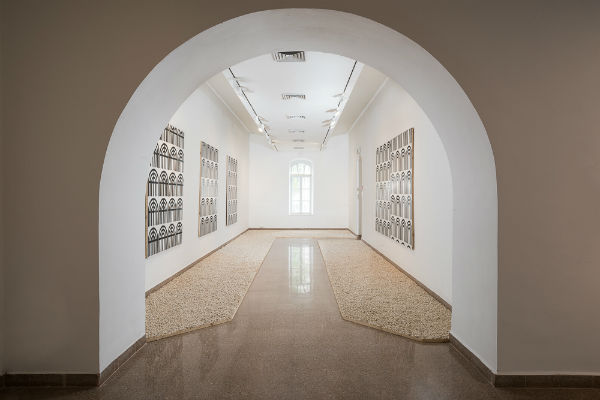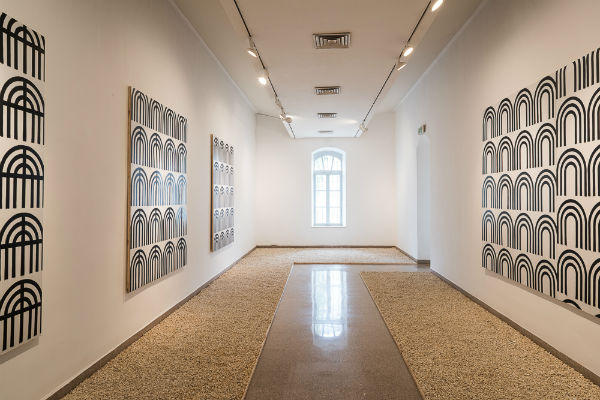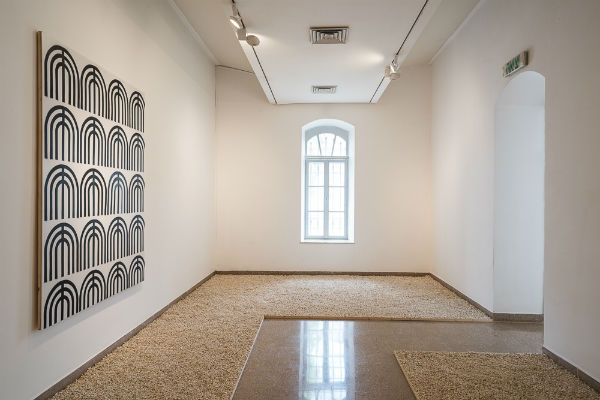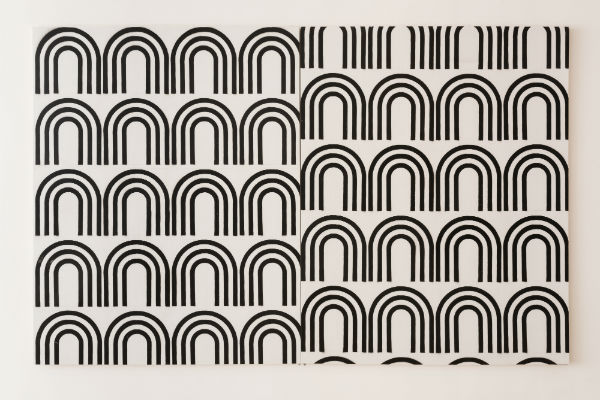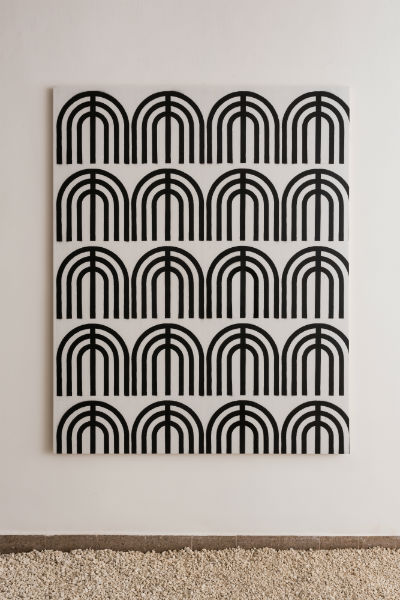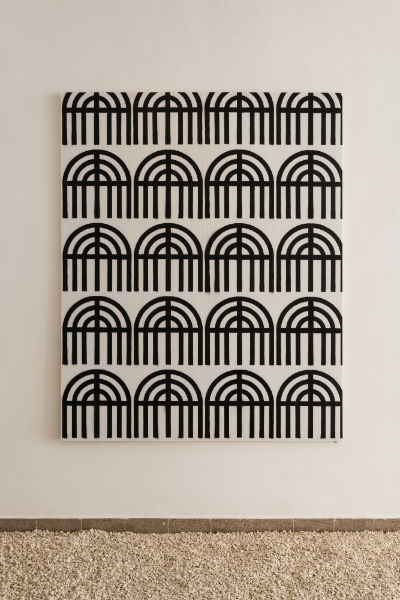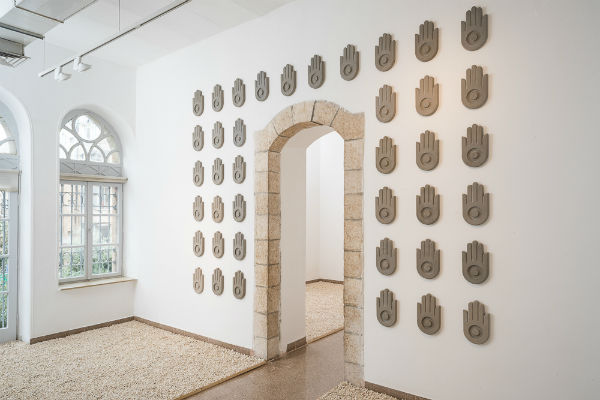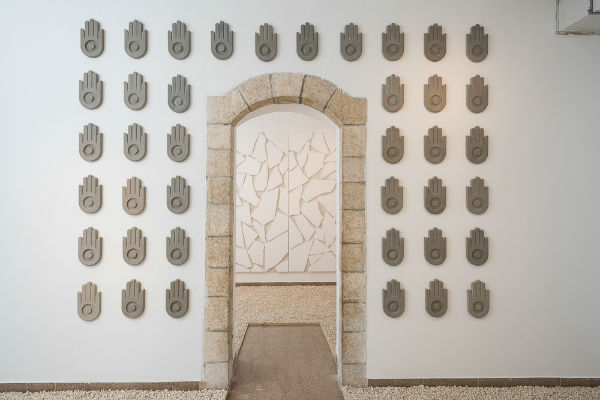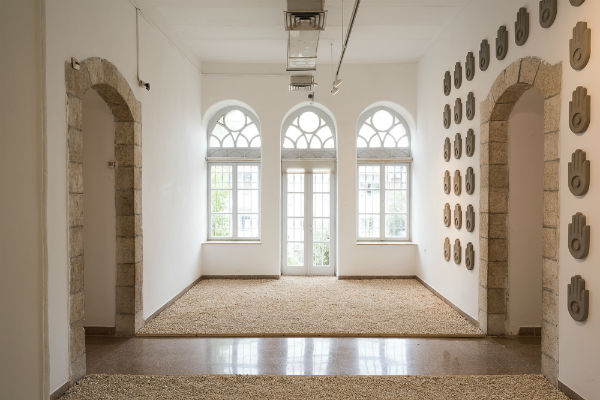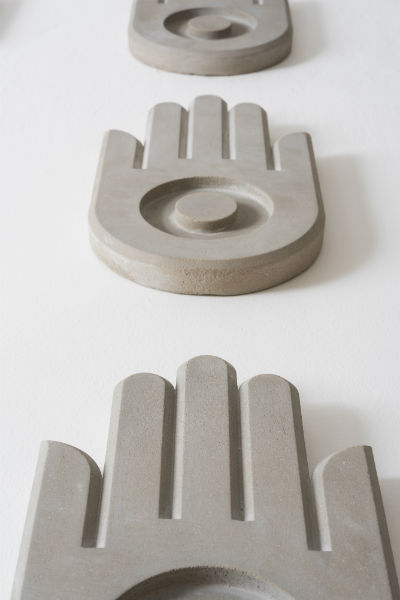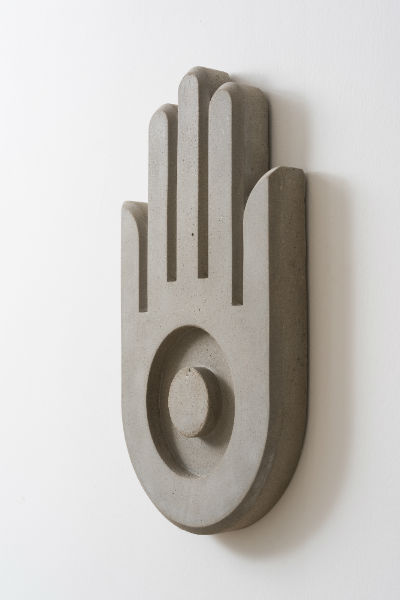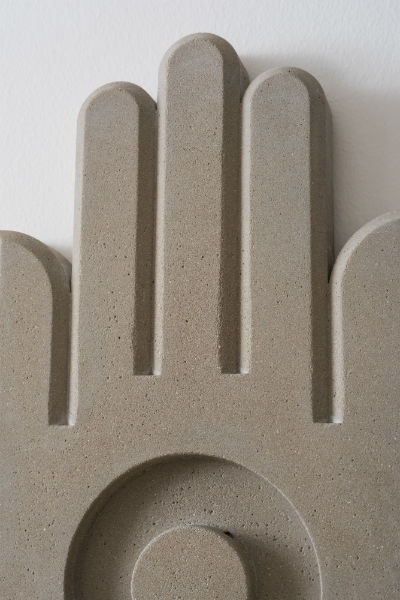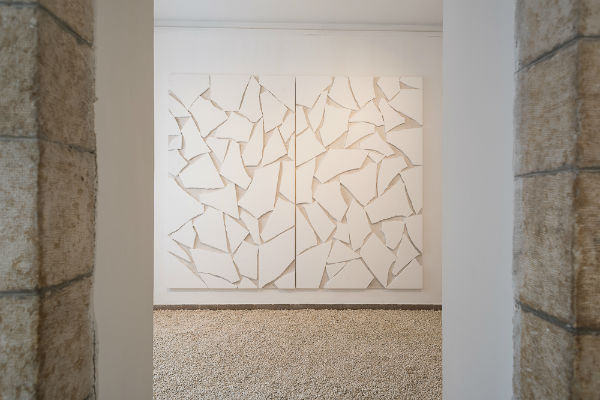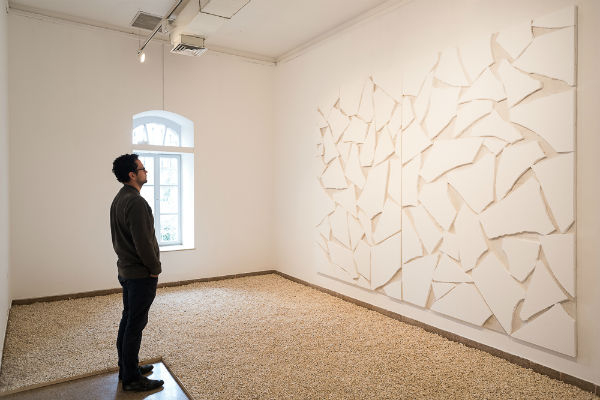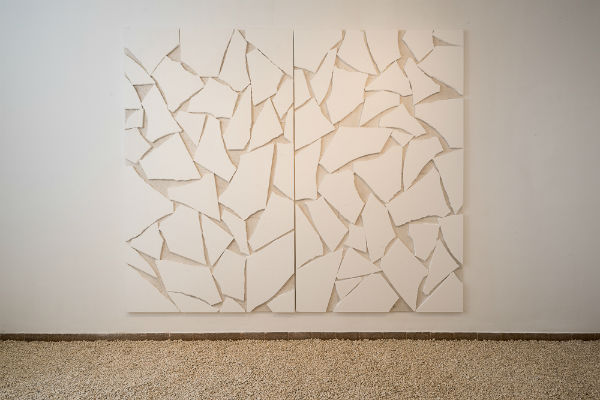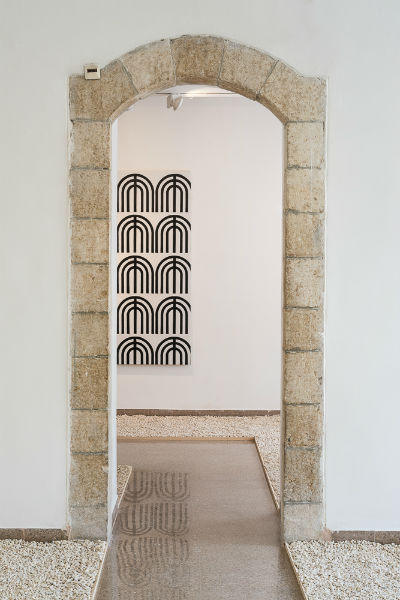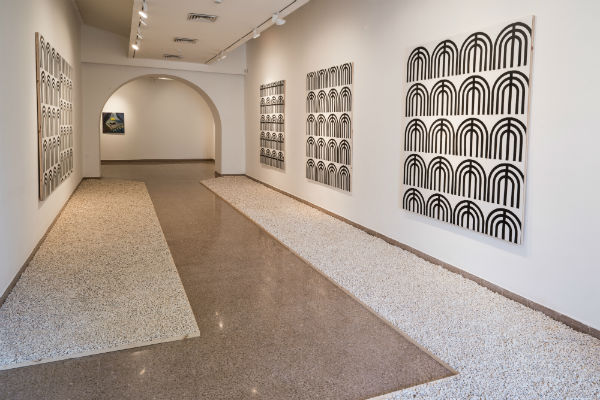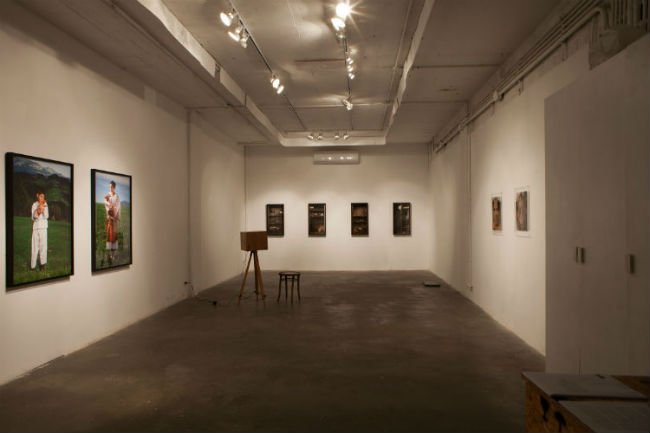Yanai Segal
The Jerusalem Artist's House
Oct.- Dec. 20154
Yanai Segal’s exhibition, Walkway, does not presume to present a mimetic reality or a minimalistic scene of events. The exhibition is an attempt to create a conceptual space that encompasses disparate worlds, and bridges between the everyday sensory experience and a more transcendent dimension. Segal uses the form of the promenade as a mechanism and works it into the viewer’s physical experience, and uses a selection of symbolically charged traditional motifs taken from the Israeli, as well as Jewish, repertoire (Hamsa and Menorah) to indicate a spiritual experience.
Segal creates a site-specific installation that re-defines the exhibition space and while questioning the conventions of viewing and consuming contemporary art. In the manner in which he directs the movement of viewers within the space, Segal wishes to examine the dynamics between the artwork and its “viewer - consumer”.
The works on display offer a reflective look at the aesthetics of local modernist architecture. Large areas of the gallery floor are covered in gravel, marking a path from one room to the next, tracing the exhibition’s territorial continuity for the viewer. The drawn path restricts and dictates the pace and flow of visitors through the installation, altering their perspective and rearticulating their relation to the work.
The paintings and reliefs featured in the exhibition focus on pattern and ornament, strategically utilizing repetition and reproduction. First and foremost, Segal is guided by a designer’s mode of thinking, devoid of a linear visual narrative, and aspires to aesthetically mend his surroundings using simple and base materials such as Polystyrene, corrugated plastic sheeting, concrete and gravel. He presents us with the local variety of modernism – at times violent, at times ugly and insensitive, aesthetically reminiscent of memorials and monuments, yet also liberates it and redeems it from its original aesthetic values and recasts it as sublime within the context of this installation. The deep chasm that separates between the transcendent experience that seems to be evoked and the forms and materials in which it takes shape creates a sense of irony that puts into question the attempt to reach the transcendental in the first place.
Curator: Sally Haftel Naveh

